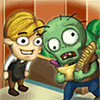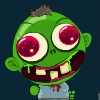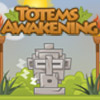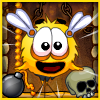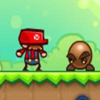" /> Anthro Lab 101 Flashcards Histological sections of 14 maxillary and 28 mandibular teeth from four chimpanzee (Pan troglodytes) individuals and three molar teeth from three chimpanzees of unknown origin were prepared in accordance with a well-established protocol. Mountain gorillas diet is high in tannins. Like incisors, molars are named after the function they perform. Leopards, large snakes, and big birds of prey will eat gibbons if they can catch these arboreal acrobats. In the Aztec religion, spider monkeys are associated with the god of arts, pleasure, and playfulness. On average, Old World monkeys will reproduce every one to two years, whereas hominoids will reproduce once every four to nine years, depending on the taxon. This group of monkeys can weigh up to 915 kg and have evolved prehensile tails that can hold their entire body weight. They are large and subject to sexual dimorphism, being larger in males than females. This page titled 5.3: Primate Diversity is shared under a CC BY-NC 4.0 license and was authored, remixed, and/or curated by Beth Shook, Katie Nelson, Kelsie Aguilera, & Lara Braff, Eds. Clade relationships are determined using derived traits shared by groups of taxa as well as genetic similarities. Because they are not fast moving, these strepsirrhines have developed alternative defenses against predators. The strepsirrhines include the groups commonly called lemurs, lorises, and galagos (Figure 5.14). Suborder Haplorrhini is divided into three infraorders: Tarsiiformes, which includes the tarsiers of Asia; Platyrrhini, which includes the New World monkeys of Central and South America; and Catarrhini, a group that includes the Old World monkeys and apes of Asia and Africa, as well as humans. Leaf monkeys are also known for having odd noses (Figure 5.35), and so they are sometimes called odd-nosed monkeys. Cheek-pouch monkeys are able to pack food into their cheek pouches (Figure 5.36), thus allowing them to move to a location safe from predators or aggressive individuals of their own species where they can eat in peace. In part, their success over hominoids is due to the faster reproductive rates of cercopithecoids relative to hominoids. Today, the Infraorder Tarsiiformes includes only one genus, Tarsius (Figure 5.21). This trait is characteristic of Old World monkeys. Orangutans are great apes, as opposed to monkeys, and are closely related to humans, having 97% of DNA in common. While many species are nocturnal, plenty of others are diurnal or cathemeral. Great apes have smaller canines than Old World monkeys, though still sexually dimorphic; human canines are smaller still, and there is no size difference between the sexes. As discussed earlier, all hominoids have an extended life history, taking a long time to grow and develop, and have a long life span. Strepsirrhines can be found all across the Old World: in Asia, Africa, and on the island of Madagascar (Figure 5.16). This means looking for the aspects of human biology that lead us to place humans within the taxonomic diversity we have just discussed. There are smart species and stupid species among them (no o all of these are true Question 46 (2 points) Listen What is the upper arm bone called? This is reflected in the wiring in the visual system of the brain but also in their polymorphic color vision. In the Mayan creation story, the Popol Vuh, the hero brothers are actually a howler monkey and a spider monkey, who represent ancestors of humans in the story. Catarrhines are also more terrestrial. Dietary Plasticity - change in diet. Haplorrhines also differ in social behavior. Lack of post orbital bar. These small monkeys, all of which weigh less than 1 kilogram, live in cooperative family groups, wherein usually only one female reproduces and everyone else helps carry and raise the offspring. The larger body size of catarrhines is related to the more terrestrial lifestyle of many members of this infraorder. This dental comb is composed of the lower canines and lower incisors compressed from side to side and slanted forward; the most specialized dental combsseen, for example, in the fork-crowned lemur (genus Phaner) and the needle-clawed galago (genus Euoticus)are used for scraping exudates off bark, but other species use the structure for piercing fruit, for nipping off leaves, and for grooming the fur. I am currently continuing at SunAgri as an R&D engineer. Fighting isnt just a human trait, its part of life for much of the animal kingdom. 3.2 (consisting of 2 incisors, 1 canine, 3 premolars, and 2 or 3 molars). Which primates have a postorbital bar? - Studybuff Leaf monkeys are primarily folivores, with some species eating a significant amount of seeds. There are several species of gorillas that can be found across Central Africa. EXPLORATIONS: An Open Invitation to Biological Anthropology, { "5.01:_What_is_a_Primate" : "property get [Map MindTouch.Deki.Logic.ExtensionProcessorQueryProvider+<>c__DisplayClass228_0.
" /> Anthro Lab 101 Flashcards Histological sections of 14 maxillary and 28 mandibular teeth from four chimpanzee (Pan troglodytes) individuals and three molar teeth from three chimpanzees of unknown origin were prepared in accordance with a well-established protocol. Mountain gorillas diet is high in tannins. Like incisors, molars are named after the function they perform. Leopards, large snakes, and big birds of prey will eat gibbons if they can catch these arboreal acrobats. In the Aztec religion, spider monkeys are associated with the god of arts, pleasure, and playfulness. On average, Old World monkeys will reproduce every one to two years, whereas hominoids will reproduce once every four to nine years, depending on the taxon. This group of monkeys can weigh up to 915 kg and have evolved prehensile tails that can hold their entire body weight. They are large and subject to sexual dimorphism, being larger in males than females. This page titled 5.3: Primate Diversity is shared under a CC BY-NC 4.0 license and was authored, remixed, and/or curated by Beth Shook, Katie Nelson, Kelsie Aguilera, & Lara Braff, Eds. Clade relationships are determined using derived traits shared by groups of taxa as well as genetic similarities. Because they are not fast moving, these strepsirrhines have developed alternative defenses against predators. The strepsirrhines include the groups commonly called lemurs, lorises, and galagos (Figure 5.14). Suborder Haplorrhini is divided into three infraorders: Tarsiiformes, which includes the tarsiers of Asia; Platyrrhini, which includes the New World monkeys of Central and South America; and Catarrhini, a group that includes the Old World monkeys and apes of Asia and Africa, as well as humans. Leaf monkeys are also known for having odd noses (Figure 5.35), and so they are sometimes called odd-nosed monkeys. Cheek-pouch monkeys are able to pack food into their cheek pouches (Figure 5.36), thus allowing them to move to a location safe from predators or aggressive individuals of their own species where they can eat in peace. In part, their success over hominoids is due to the faster reproductive rates of cercopithecoids relative to hominoids. Today, the Infraorder Tarsiiformes includes only one genus, Tarsius (Figure 5.21). This trait is characteristic of Old World monkeys. Orangutans are great apes, as opposed to monkeys, and are closely related to humans, having 97% of DNA in common. While many species are nocturnal, plenty of others are diurnal or cathemeral. Great apes have smaller canines than Old World monkeys, though still sexually dimorphic; human canines are smaller still, and there is no size difference between the sexes. As discussed earlier, all hominoids have an extended life history, taking a long time to grow and develop, and have a long life span. Strepsirrhines can be found all across the Old World: in Asia, Africa, and on the island of Madagascar (Figure 5.16). This means looking for the aspects of human biology that lead us to place humans within the taxonomic diversity we have just discussed. There are smart species and stupid species among them (no o all of these are true Question 46 (2 points) Listen What is the upper arm bone called? This is reflected in the wiring in the visual system of the brain but also in their polymorphic color vision. In the Mayan creation story, the Popol Vuh, the hero brothers are actually a howler monkey and a spider monkey, who represent ancestors of humans in the story. Catarrhines are also more terrestrial. Dietary Plasticity - change in diet. Haplorrhines also differ in social behavior. Lack of post orbital bar. These small monkeys, all of which weigh less than 1 kilogram, live in cooperative family groups, wherein usually only one female reproduces and everyone else helps carry and raise the offspring. The larger body size of catarrhines is related to the more terrestrial lifestyle of many members of this infraorder. This dental comb is composed of the lower canines and lower incisors compressed from side to side and slanted forward; the most specialized dental combsseen, for example, in the fork-crowned lemur (genus Phaner) and the needle-clawed galago (genus Euoticus)are used for scraping exudates off bark, but other species use the structure for piercing fruit, for nipping off leaves, and for grooming the fur. I am currently continuing at SunAgri as an R&D engineer. Fighting isnt just a human trait, its part of life for much of the animal kingdom. 3.2 (consisting of 2 incisors, 1 canine, 3 premolars, and 2 or 3 molars). Which primates have a postorbital bar? - Studybuff Leaf monkeys are primarily folivores, with some species eating a significant amount of seeds. There are several species of gorillas that can be found across Central Africa. EXPLORATIONS: An Open Invitation to Biological Anthropology, { "5.01:_What_is_a_Primate" : "property get [Map MindTouch.Deki.Logic.ExtensionProcessorQueryProvider+<>c__DisplayClass228_0.
" />

do new world monkeys have bilophodont molars
1 users played
Game Categories
queen of hearts puns
">

